
The 7 most beautiful Epimediums
Our selection of the most beautiful elf flowers!
Contents
Elegance and finesse, this is how to define barrenwort in two words. This woodland perennial, charmingly named “Warley bishop’s hat”, is highly regarded for its delicate flowering, sometimes very discreet, but also for its highly decorative marbled foliage, which changes colour with the seasons. Their flowers are light with spurs and come in various shapes and a wide range of colours: white, yellow, orange, pink, red, or purple. Some are indeed larger (Epimedium grandiflorum) than others depending on the species or variety. Often used as groundcover, discover our selection of the most beautiful barrenworts that can fit perfectly in a border, at the feet of trees and bushes, or in a shady rockery. To help you pair them in the garden, a few plants are suggested for each variety.
Unsure about planting Epimedium in your garden? With our web application Plantfit, ensure you plant appropriately!
Epimedium pinnatum 'Black Sea'
The Epimedium pinnatum ‘Black Sea’ is an original evergreen variety that offers us decorative dark foliage all year round. Initially light green, the dentate leaves become tinged with a chocolate purple at ripeness! This barrenwort produces small, downward-curving flowers with four yellow petals and spurs, all crowned with pink sepals enhanced with small amber touches. The spring flowering typically occurs from April to May on purple floral stems about twenty centimetres long. The foliage of this fairy flower is very trendy in a contrasting black and white garden. In semi-shade, the combination of the pinnate barrenwort ‘Black Sea’ works well with perennials such as large-flowered comfrey, ‘Green Spice’ heuchera, ‘Black Barlow’ hybrid columbine, black mountain cornflower, hardy geranium maculatum var. album, all accompanied by a white-barked birch.

Epimedium pinnatum ‘Black Sea’
Epimedium pubigerum 'Orangekönigin'
The Epimedium pubigerum ‘Orangekönigin’ warms shaded gardens with its warmly coloured flowering. This variety of fairy flower lives up to its name, ‘Orangekönigin’ meaning “Orange Queen”. In spring, it produces a cloud of small star-shaped flowers measuring 1 to 2 cm, copper-orange and yellow, which adorn the clump of about 40 cm in all directions. Its foliage is heart-shaped and marcescent (it dries and remains on the plant during winter), green and purplish bronze in spring, then coral orange in autumn, harmonising with the flowering. Note that in commerce, you may also find this variety under the name Epimedium x warleyense ‘Orangekönigin’. Thriving in all types of soil, even poor and stony, incorporate this fairy flower ‘Orangekönigin’ into a semi-shaded rockery alongside saxifrages, creeping bugle, corydales, and cool shade grasses like Carex morrowii ‘Ice Dance’.
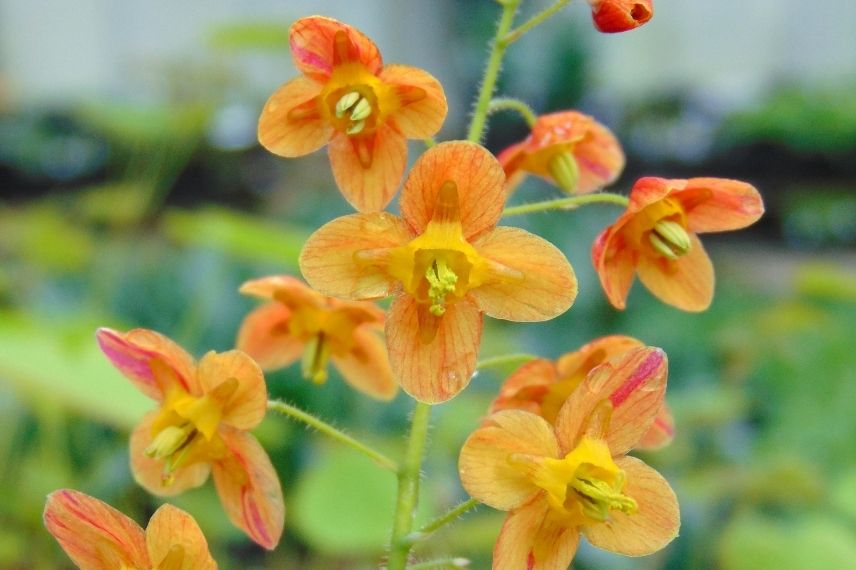
Epimedium pubigerum ‘Orangekönigin’
Discover other Epimedium - Barrenwort
View all →Available in 2 sizes
Available in 2 sizes
Available in 1 sizes
Available in 1 sizes
Available in 1 sizes
Available in 1 sizes
Available in 1 sizes
Available in 1 sizes
Available in 1 sizes
Available in 2 sizes
Epimedium x versicolor 'Sulphureum'
Epimedium x versicolor ‘Sulphureum’ is a very hardy perennial that can withstand temperatures below -15°C. Very bright, this fairy flower ‘Sulphureum’ produces trailing panicles of small sulphur yellow and cream flowers from April to June! Additionally, its evergreen foliage with changing colours is stunning to observe throughout the seasons: first coppery red in spring, then green in summer, and finally purplish red in autumn-winter. This fairy flower prefers humus-bearing, cool soils and can tolerate root competition from surrounding plants as long as the ground remains cool in summer. Vigorous and forming beautiful loose cushions about 30 to 40 cm high and approximately 50 cm wide, the ‘Sulphureum’ epimedium finds its place in a shady border alongside bleeding hearts, masterworts, foxgloves, and anemones.
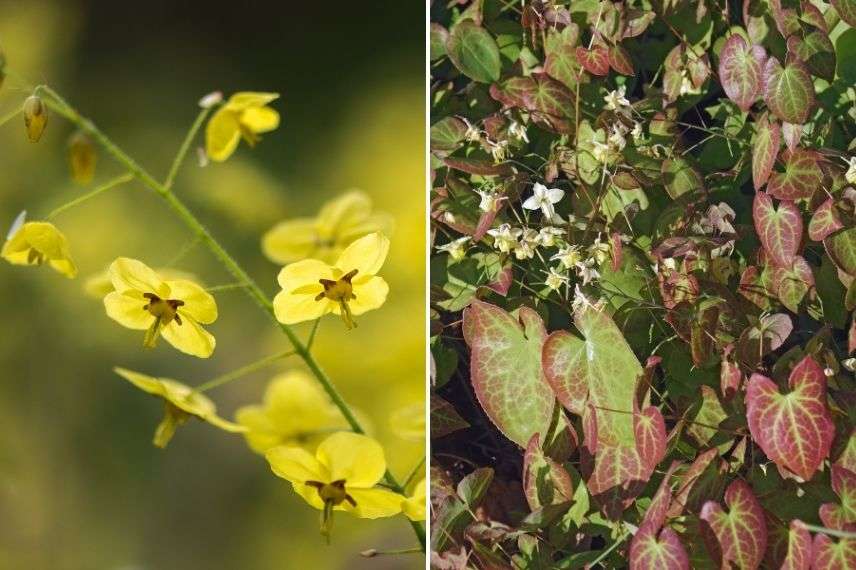
Epimedium x versicolor ‘Sulphureum’
Epimedium youngianum 'Niveum'
Awarded an Award of Garden Merit, Epimedium (x) youngianum ‘Niveum’ is a variety of deciduous to semi-evergreen epimedium in mild climates, resulting from a cross-breeding between two Japanese species. Highly valued for its floribundity, it produces masses of pure white small flowers from April to May. Inserted on fine, curved stems, these resemble little bells. This hybrid presents a silhouette of 30 cm in all directions, formed by foliage composed of ovate leaflets in varying colours. The young leaves are purple and bronze in spring, pale green at ripeness, and take on warm hues in autumn. Although its growth is slower than that of other species and varieties, the epimedium ‘Niveum’ is easy to grow and remains a very hardy shade plant. Lacking a rhizomatous root system, it does not spread like some groundcover epimediums. In partial shade, in cool to moist soil in summer, well-drained, humus-bearing, and non-calcareous, pair the elf flower ‘Niveum’ with light woodland plants such as sweet woodruff, wood rush, Japanese pachysandra, and lungwort.
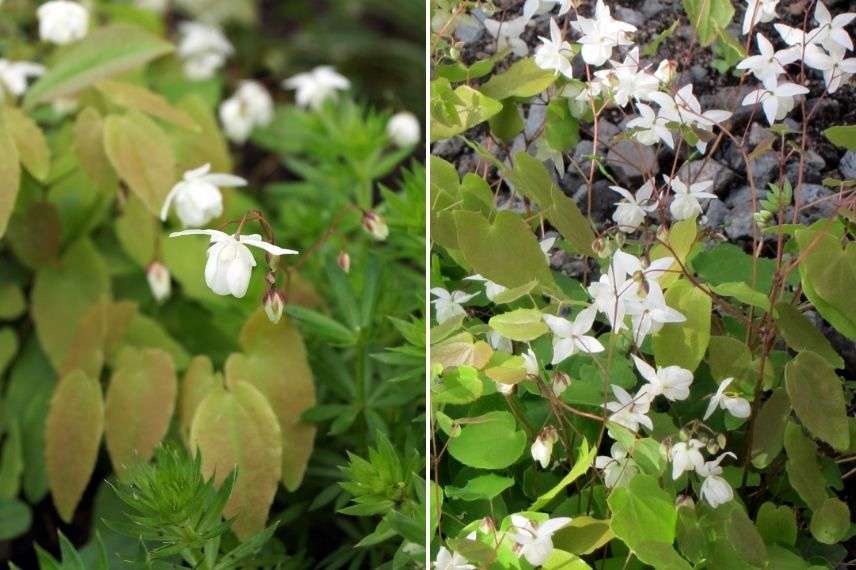
Epimedium (x) youngianum ‘Niveum’ (photo by cultivar413 – Flickr)
Epimedium rubrum
The Epimedium rubrum is an excellent groundcover with stunningly marbled foliage. In spring, the young, glossy green leaves are marked with red, revealing well-defined green veins. Then, in autumn, its evergreen foliage intensifies in colour, turning a deep purplish red. From April to May, it is adorned with small bicoloured flowers featuring deep pink, almost red sepals and white petals. This robust and hardy European species retains its foliage throughout winter. Spreading through its small running rootstocks, the red epimedium is perfect for planting at the base of trees in shaded, cool to dry conditions. To complement its pink flowers with white centres in spring and brighten the garden, choose vibrant plants such as hardy geranium, winter aconite, Cyclamen coum, and Ophiopogon chingii.
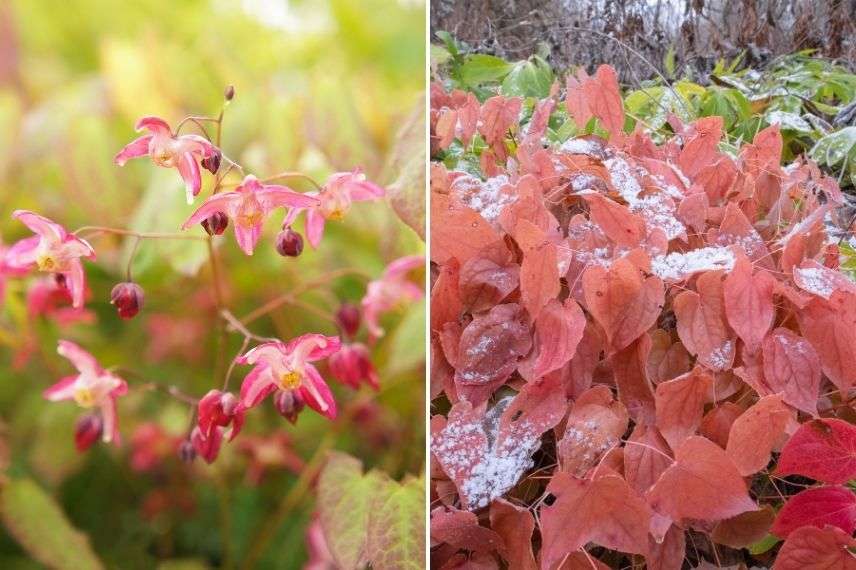
Epimedium rubrum: winter leaves on the right
Epimedium grandiflorum ‘Beni-kujaku’
Flowering in May, Epimedium grandiflorum ‘Beni-kujaku’ enchants us with its large, lilac-coloured flowers accented with a touch of white. Composed of sepals and petals with slightly crumpled spurs surrounding a yellow centre, its inflorescences are grouped in bouquets at the tips of flexible stems about thirty centimetres tall. The deciduous foliage of this perennial is purplish bronze in autumn and spring and turns a lovely soft green with a red-edged border during summer. This charming, vigorous, and recent epimedium can spread its foliage up to 40 cm wide. This elf flower ‘Beni-kujaku’ thrives in humus-bearing, cool soils and is not afraid of the cold (it is hardy down to -15°C). Plant it in the shade to dress the base of trees or bushes, for example, alongside ferns, hostas, primroses, and Caucasian forget-me-nots.
Epimedium grandiflorum 'Lilafee'
The Epimedium grandiflorum ‘Lilafee’ is the plant you need to create a fairy-tale setting in your garden. This highly floriferous variety of epimedium boasts numerous large lilac flowers in early spring. With their long, slender white-tipped spurs, these inflorescences resemble the elegant flowering of aquilegias or certain orchids. This deciduous species with a spreading habit does not exceed 25 cm in height at ripeness and spreads up to 30 cm in width. Its foliage develops after flowering, in a soft green with a slight bronze tint, which darkens during summer, before enhancing its coppery hue in autumn. Pair this elf flower ‘Lilafee’ with spring bulbs such as lily of the valley, daffodils, bluebells, fritillaries, and camassia.
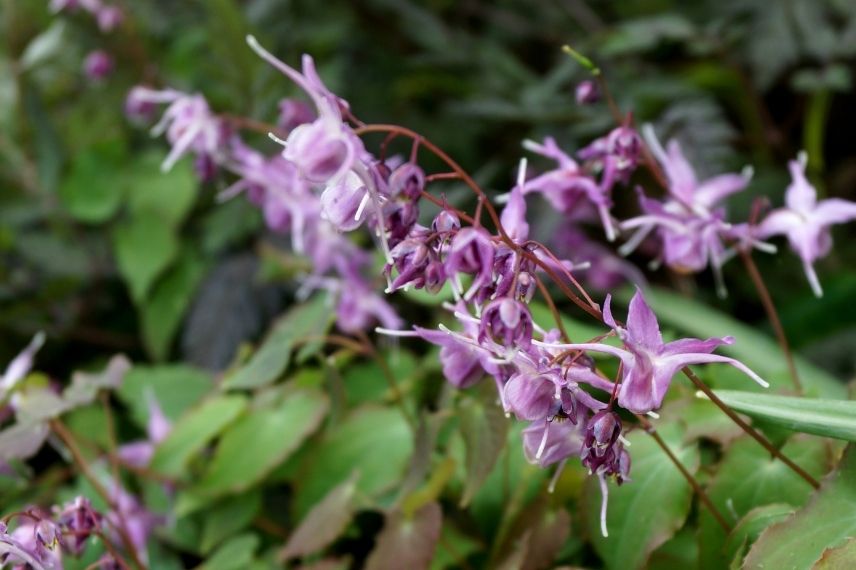
Epimedium grandiflorum ‘Lilafee’
For further reading
- Discover our association ideas for Epimedium
- Everything you need to know about Epimedium: planting, growing and maintaining
- Find our entire range of Epimediums on our site
- Subscribe!
- Contents
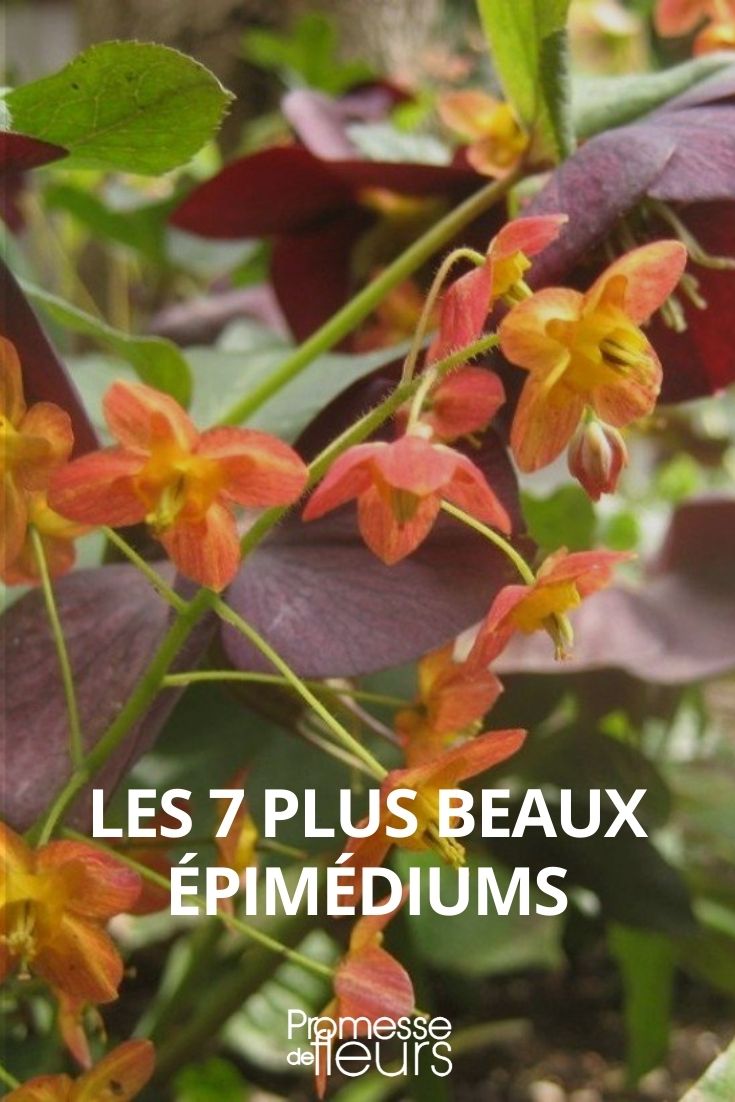































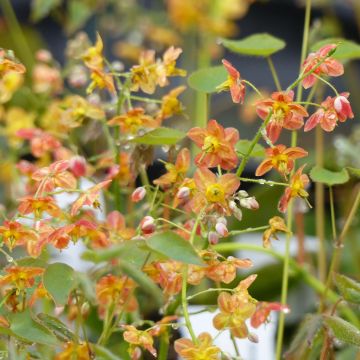
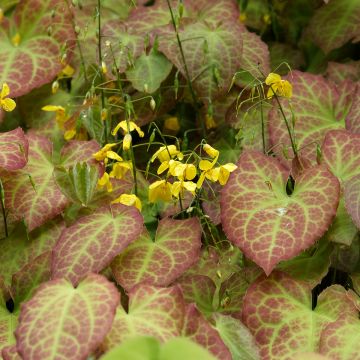
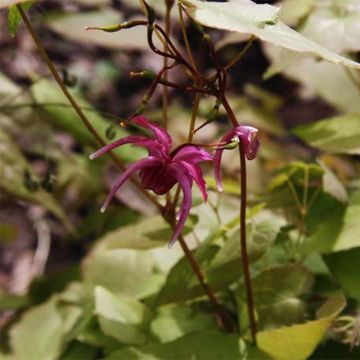
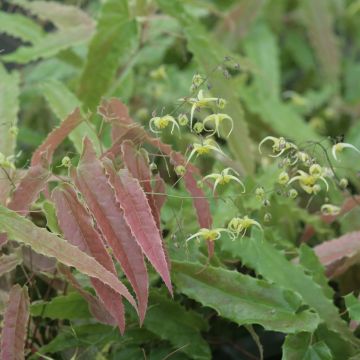
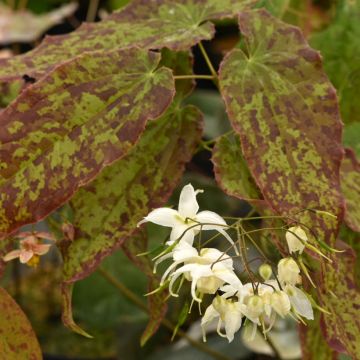

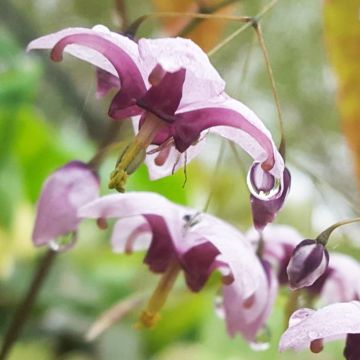
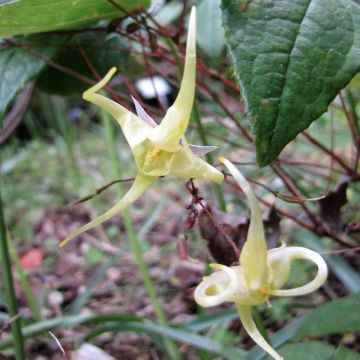
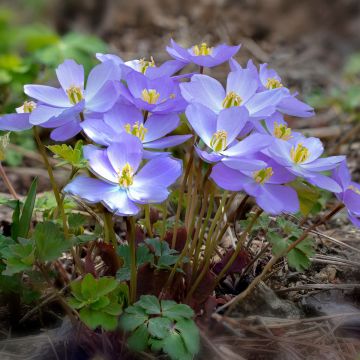
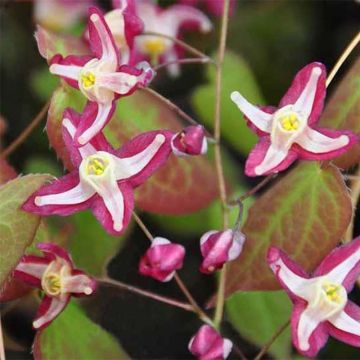
Comments